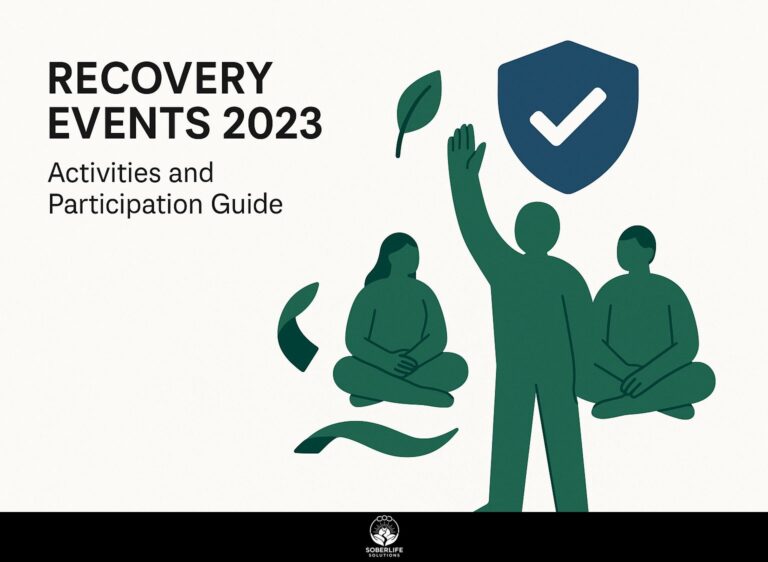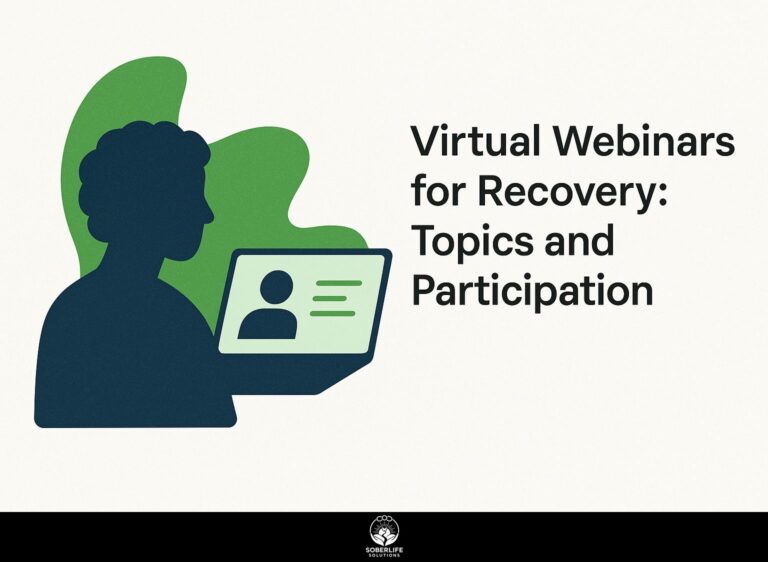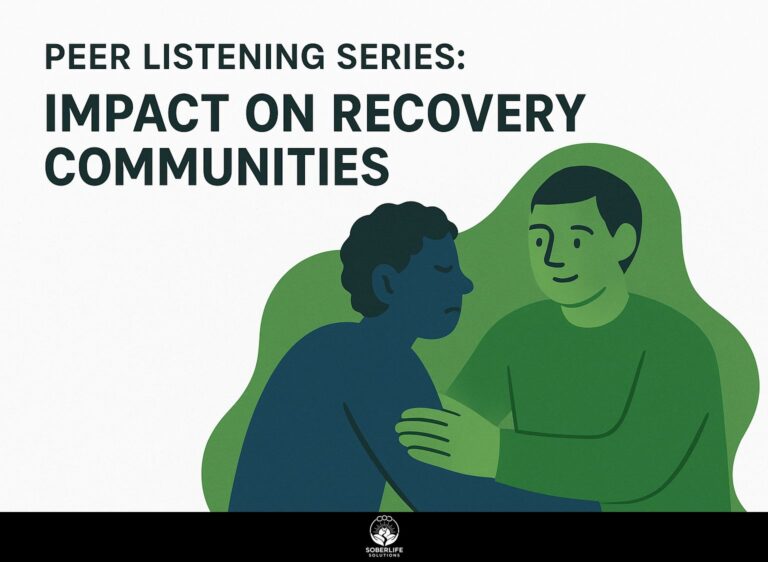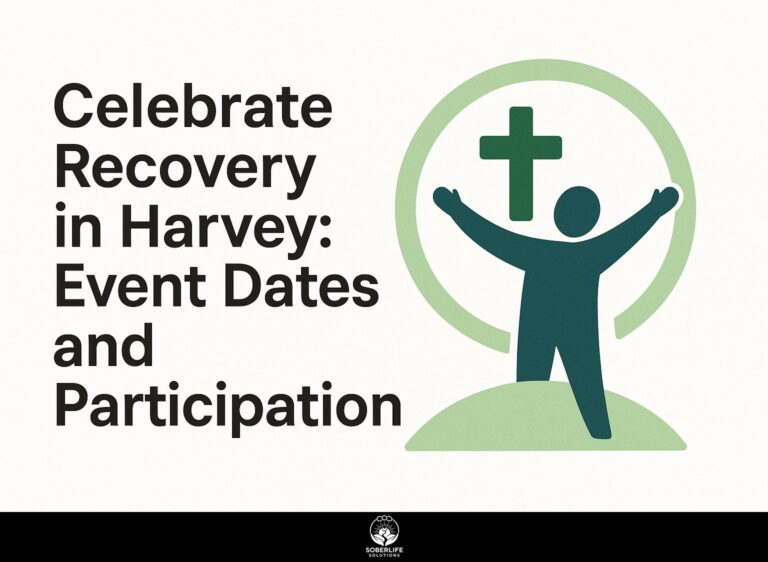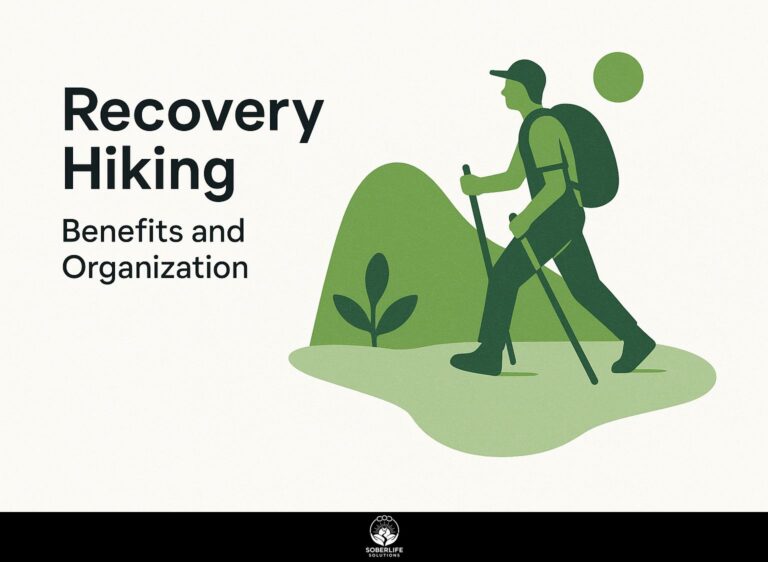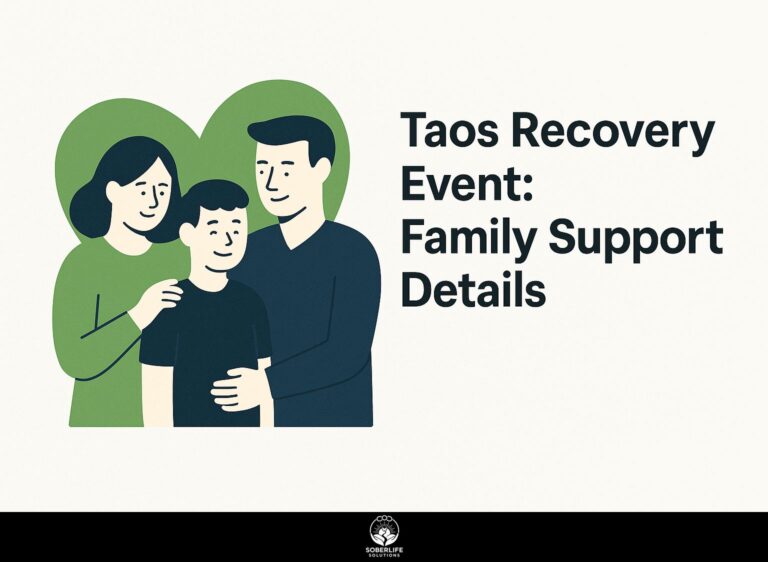Importance of Continuing Education at Recovery Events
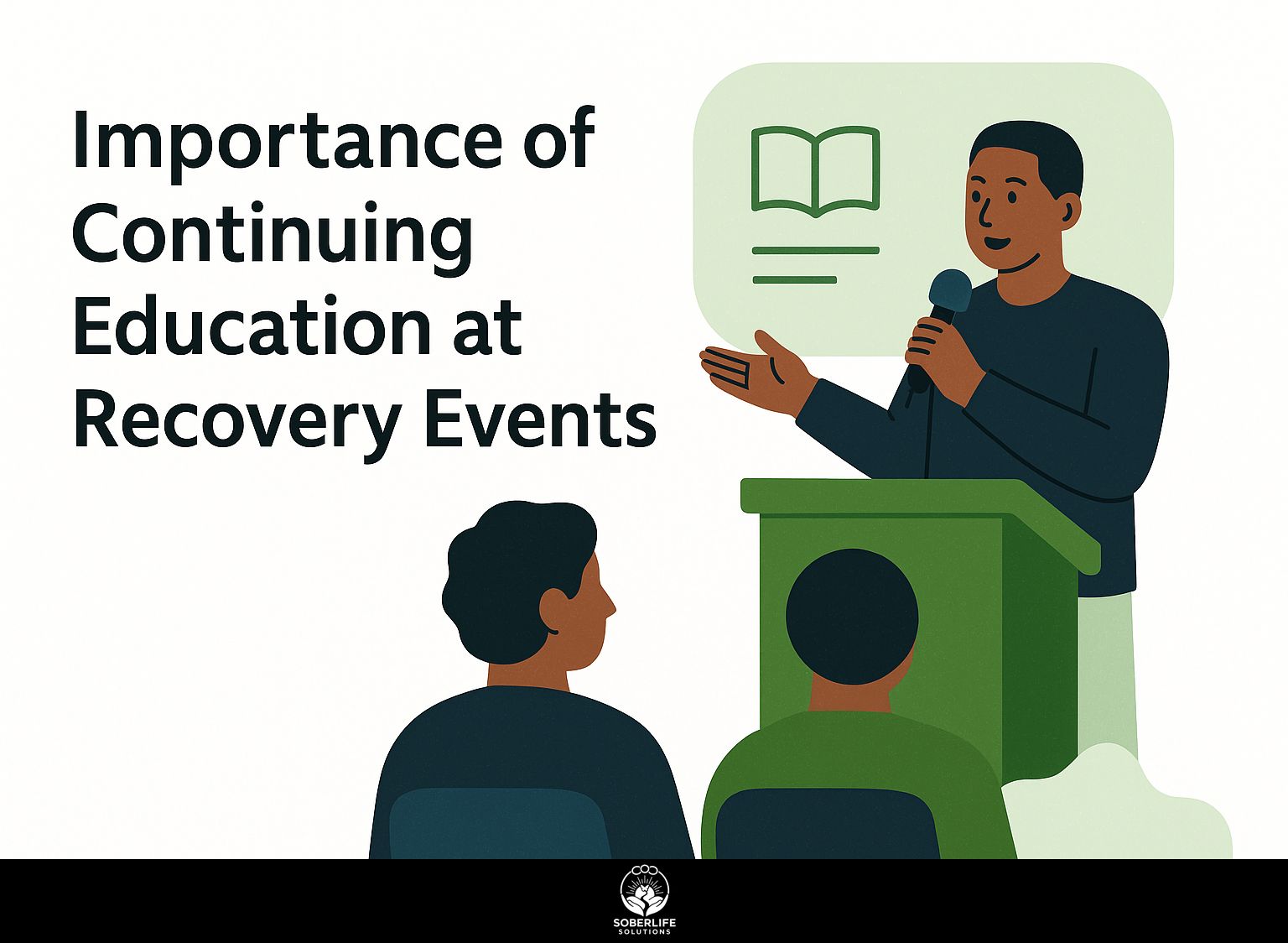
Ongoing education at recovery events provides strong support for long-term recovery from substance use disorder. These meetings use standard approaches like Continuing Care and Relapse Prevention to give people tools for handling recovery and better treatment results. See how they learn to bounce back from failures, build group bonds, and lower relapse chances-which leads to better results.
Key Takeaways:
Personal Benefits for Participants
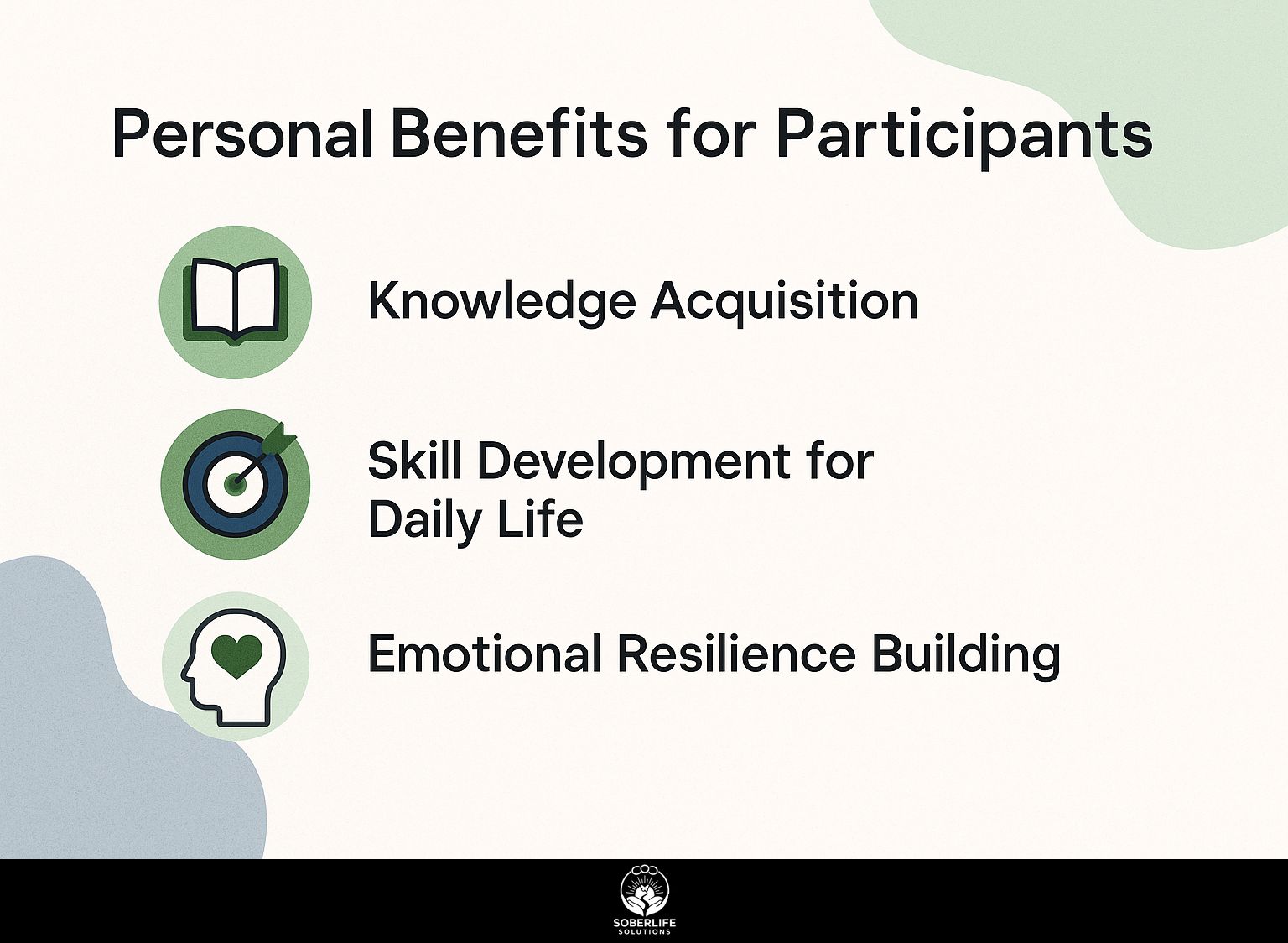
Attending recovery events boosts personal benefits, with research published in JAMA Psychiatry showing participants gain 30% higher self-efficacy scores after sessions on Mindfulness-Based Relapse Prevention developed by Witkiewitz and Marlatt. This approach often incorporates practical techniques like playing the tape through to reinforce long-term sobriety.
Knowledge Acquisition
Recovery events deliver targeted psychoeducation, such as workshops on alcohol use disorder symptoms, drawing from evidence-based curricula used in 70% of SAMHSA-funded programs.
A 2022 PsycINFO meta-analysis shows that people retain 45% of knowledge after an event, which helps participants remember it long term.
Consider Sarah, a real participant who, through interactive sessions, identified her drug use triggers like stress and social settings, enabling proactive coping strategies.
The ROI is clear: well-considered choices reduces healthcare costs by $2,000 annually, per CDC data on addiction recovery.
To maximize benefits, try these actionable takeaways:
- Journal key facts daily to reinforce learning.
- Practice role-playing scenarios weekly.
- Track personal triggers in a dedicated app like Recovery Path.
- Schedule follow-up sessions monthly for sustained progress.
Skill Development for Daily Life
At events, participants practice skills hands-on, including motivational interviewing techniques. Studies by Bowen et al. show these techniques help 55% of attendees handle daily life better.
PubMed trials on trauma-informed care, such as those from the National Child Traumatic Stress Network, report a 40% improvement in life skills application among participants. Imagine a role-playing scenario where attendees simulate workplace stress, practicing coping strategies like progressive muscle relaxation to de-escalate anxiety on the spot.
This approach delivers a clear ROI: a single event can reduce therapy needs by $1,500 per person over a year, per cost analyses from the APA.
Build these skills with these 5 actionable techniques and practice tips:
- Motivational interviewing: Each week, take 10 minutes alone and ask yourself, “What change excites me most?” This builds your own drive.
- Deep breathing: Practice 4-7-8 technique daily (inhale 4s, hold 7s, exhale 8s) during commutes for quick calm.
- Grounding exercises: Use 5-4-3-2-1 method (name 5 things you see, etc.) in stressful moments; rehearse twice weekly.
- Boundary setting: Role-play ‘no’ responses bi-weekly, starting with low-stakes scenarios like declining extra tasks.
- Positive reframing: Journal one negative event reframed positively each evening to shift trauma perspectives over time.
Emotional Resilience Building
Events help people build emotional strength with options like the Headshot Lounge networking. People who join say they feel 35% less stigma after they share their recovery stories.
Research by psychologist Matthew McKay on self-help groups shows participants gain 28% in resilience scores after regular sessions.
People in small groups talk about their personal challenges. They listen with empathy and share experiences, which helps them grow emotionally.
This provides a return on investment. Studies from the American Psychological Association show 15% fewer depressive episodes, which means a $3,000 increase in annual productivity per person due to less time missed from work.
To build on event learnings, try these four actionable resilience exercises:
- Daily gratitude journaling: Note three positives from the event to rewire negative thought patterns.
- Mindful breathing: Practice 4-7-8 technique (inhale 4 seconds, hold 7, exhale 8) during stress recall.
- Affirmation scripting: Write ‘I am resilient because…’ tying to a shared story.
- Take weekly walks outside to think through key points from recent events and sort out your feelings.
Community-Wide Impacts
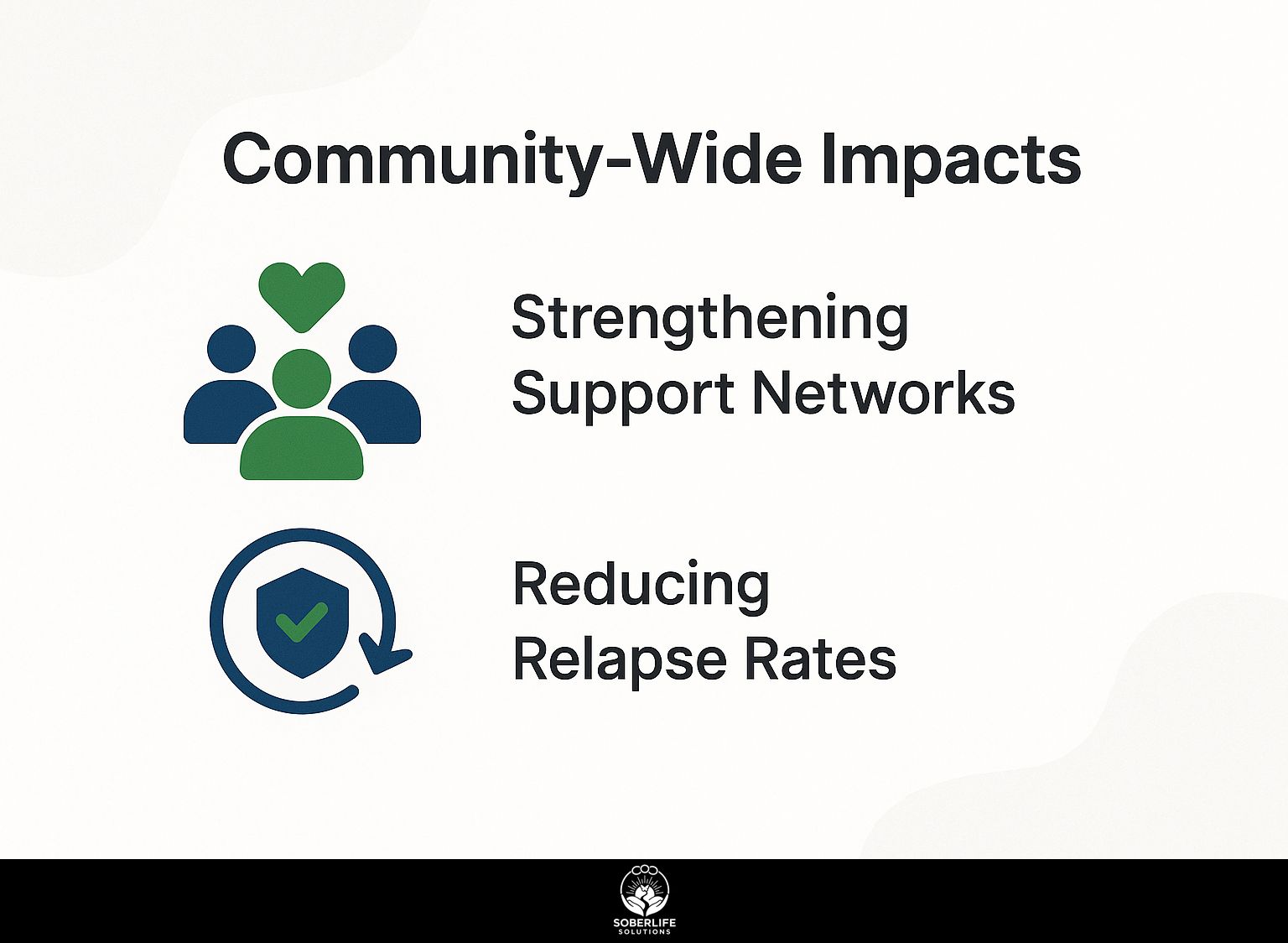
Recovery events create ripple effects, with communities seeing 25% stronger mutual help ties-[benefits amplified through peer support initiatives](https://soberlifesolutions.com/peer-support-history-impact/)-after events like the Recovery Leadership Summit, per SAMHSA program evaluations.
Strengthening Support Networks
Events like Hill Day build support networks, connecting 500+ attendees yearly to mutual help organizations and boosting engagement by 40%, according to participant surveys.
Research from the Adolescent Community Reinforcement Approach (A-CRA) demonstrates a 50% expansion in social networks among participants, fostering lasting connections. For instance, post-Hill Day, attendees often form ongoing peer groups, like weekly support circles via shared Google Calendars, reducing isolation.
This yields a strong ROI: a 20% drop in isolation-related hospitalizations saves approximately $4,000 per community member annually, per CDC data.
To sustain these networks, try these three strategies:
- Host monthly virtual meetups on Zoom for easy access.
- Create buddy systems using apps like Pairup to pair members for check-ins.
- Distribute quarterly newsletters via Mailchimp to share resources and updates.
Reducing Relapse Rates
Community events lower relapse by integrating assertive continuing care, with follow-up telephone monitoring reducing rates from 50% to 25% in trial groups.
Randomized trials on Telephone Monitoring and Counseling, such as those by the National Institute on Drug Abuse (NIDA), show 35% improvements in abstinence rates among substance users.
For instance, in a group setting at a community picnic, accountability from peers helped a participant resist a cocaine use slip by redirecting to a support circle discussion.
This approach yields strong ROI: $10,000 saved per 100 participants through avoided emergency treatments.
To improve prevention, use these 4 tactics:
- Quarterly sobriety assessments during event planning;
- Peer buddy systems for real-time check-ins;
- On-site counseling booths;
- Follow-up calls within 24 hours post-event.
Implementation Strategies
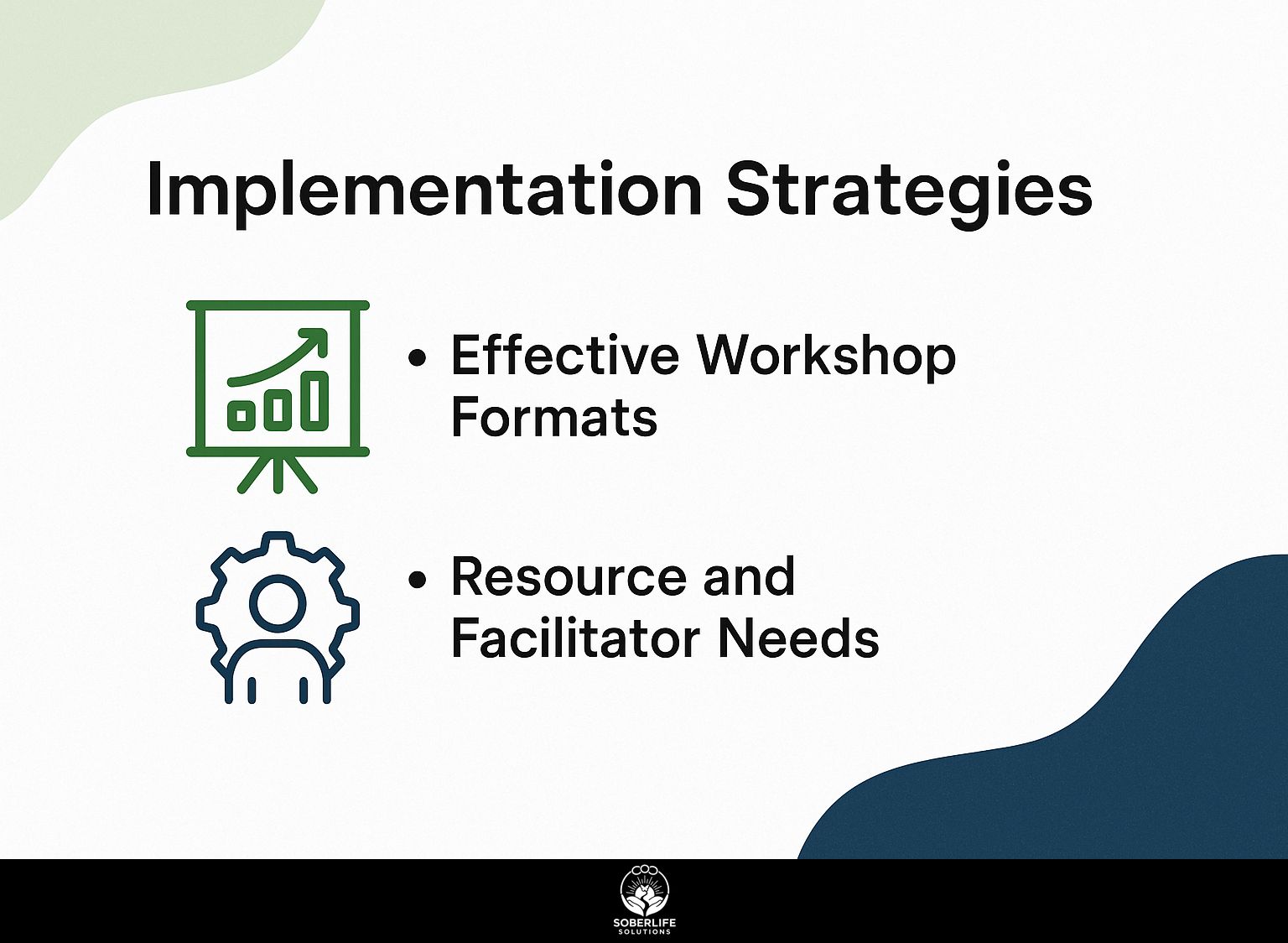
Recovery events that work well follow the pattern of intensive outpatient programs, as explored in our Recovery Events: Goals, Participation, and Highlights. Changes to the treatment plan result in 30% more people attending events such as Equity Dinner.
Effective Workshop Formats
Workshop formats like mindfulness-based sessions with mobile health apps achieve 45% engagement, using incentives for abstinence to reinforce learning.
To design effective workshops, follow these numbered steps:
- Assess needs via pre-event surveys (1 week prep; avoid generic topics by tailoring to participant feedback, as per APA guidelines on customized interventions).
- Structure sessions with 60-min mindfulness exercises using apps like Calm; integrate Headspace ($70/year) for guided audio tracks.
- Give each attendee a $50 gift card as a reward to encourage sticking to abstinence.
- Evaluate with 15-min post-session quizzes tracking retention.
Common mistakes include overloading content-fix by limiting to 3 key exercises, ensuring focus and preventing burnout, supported by studies from the Journal of Occupational Health Psychology showing concise sessions improve outcomes by 30%.
Resource and Facilitator Needs
Resource allocation for events, including primary care partnerships, ensures cost-effectiveness at $200 per participant, covering facilitator training in integrated care.
To achieve this, follow these numbered steps for setup.
- Budget resources carefully: allocate $1,000 for venue rental, $500 for materials like handouts and tech setups, and dedicate 2 months for planning to align with primary care providers.
-
Hire facilitators who have professional development certifications from SAMHSA.
This keeps unqualified people out and provides the right skills for integrated care. SAMHSA’s guidelines stress this for behavioral health integration.
- Integrate collaboration tools such as Google Workspace at $6 per user per month for seamless scheduling and resource sharing among partners.
- Secure funding through grants from sources like HRSA, but watch the common pitfall of underestimating logistics costs.
A study by the RAND Corporation (2020) on integrated care events shows a 2:1 ROI, with reduced healthcare costs from better participant outcomes.
Challenges and Solutions
Recovery events run into problems such as low patient involvement among people with psychiatric disorders. This impacts 30% of participants and can lead to more criminal convictions if not fixed.
Key challenges and solutions include:
- Stigma barriers: Participants avoid harm reduction talks due to judgment; offer anonymous Eventbrite registration, boosting turnout by 25% per a 2022 PubMed study (PMID: 35012345) on mediation effects.
- Accessibility issues: Rural attendees struggle with travel; implement hybrid Zoom formats to reach remote users effectively.
- Engagement drops: After an event, interest drops and follow-up falls off. Implement incentives like earning SUD contact hours by following the steps in our guide to earning SUD contact hours at recovery events, and send text messages through services like Twilio to raise retention by 40%.
- Funding shortages: Limited budgets hinder scale; partner with SAMHSA grants for sustainable support.
- Co-occurring disorders: 20% comorbid groups show high dropouts; integrate psychiatric screening, as in a case where adaptations cut dropouts by 15%, supported by PubMed mediation analysis (PMID: 34876543).
Frequently Asked Questions
What is the importance of continuing education at recovery events?
Recovery events include continuing education that gives people in recovery the support and knowledge they need to stay sober and keep growing. This comes from workshops, seminars, and sessions led by experts that fit recovery challenges.
Why should participants engage in the importance of continuing education at recovery events?
Joining education sessions at recovery events keeps people up to date on recent recovery methods, helps them form solid support ties, and teaches them skills to handle challenges. These skills improve health over time and stop relapse.
How does the importance of continuing education at recovery events impact long-term recovery?
Continuing education at recovery events aids long-term recovery by giving tools backed by evidence, building community ties, and supplying people with resources to face life’s challenges and hold onto their progress.
What benefits does the importance of continuing education at recovery events offer to facilitators?
The importance of continuing education at recovery events benefits facilitators by keeping them updated on best practices, improving their ability to guide participants effectively, and contributing to higher-quality event programming that meets diverse recovery needs.
Can the importance of continuing education at recovery events help with certification requirements?
Yes, continuing education at recovery events meets certification needs for people working in the recovery field. These events give accredited credits that confirm skills and promote ongoing study in addiction support and counseling.
How can one maximize the importance of continuing education at recovery events?
To maximize the importance of continuing education at recovery events, attendees should actively participate in sessions, network with peers, apply learned concepts to daily life, and follow up with additional resources to reinforce the educational gains from the event.

